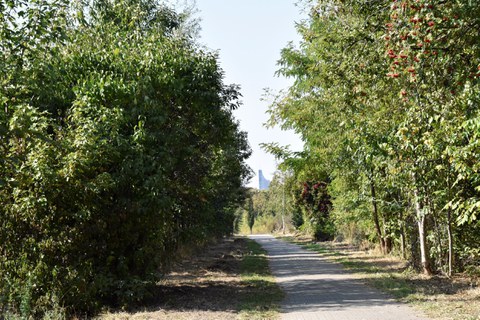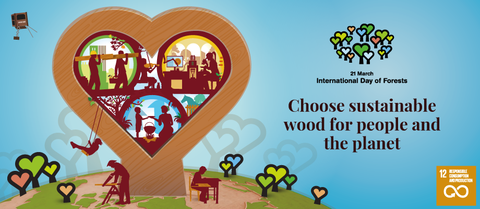Mar 19, 2022
International Day of Forests on March 21: Urban forests for more quality of life in cities
Overheated concrete, dried out meadows, and smog - summer will come again in 2022 and paralyze life, especially in the city. So-called urban forests, i.e. small forest areas in the middle of the city, could help here.
From 2009 to 2019, the professor of landscape planning, Catrin Schmidt, dealt with this special form of forest in the "Urban Forests" project. The advantages of such forest areas are obvious: on hot days they offer pleasant cooling with an average temperature of 6 degrees lower than the surrounding buildings. The forests retain water in their soil and thus not only ensure cooling through evaporation but also a more balanced water balance. And of course, forests filter the air, reduce fine dust and CO2. In times of climate change, urban forests seem to be indispensable for modern city planning and they are also cheaper for municipalities to purchase and maintain than other so-called recreational areas such as parks.
But of course, there are also hurdles: creating new forests takes time and patience. Catrin Schmidt explains: “In the first few years, the area is still fenced in and the plants are still quite small. It wasn't until eight years later that we noticed a significant leap. Then the model areas also felt like a forest for the residents.” It is also the necessary patience that makes Catrin Schmidt’s project unique. For more than ten years, she and her project partners, including the professorships for forest botany and meteorology, have planted, managed, and regularly examined three model areas in the Leipzig city area together with the city of Leipzig. They were also concerned with the attitude of the city dwellers towards the newly created forests. “We've found that there's a big disconnect between what people think of as a forest - more of a primal, overgrown forest - and what they want to have on their doorstep, which is a more park-like, 'tidy' forest," says Catherine Schmidt. Overall, the city forest is also well received by its neighbors, especially by exercise enthusiasts, who appreciate the coolness in summer and being unobserved between the trees.
For Catrin Schmidt, the project is not over after ten years: "This year there will be another monitoring where we will look at the model areas again." And because, especially with a view to climate change, the urban forest is also used by others If communities should be considered when planning future recreational areas, Catrin Schmidt and her project partners have also published the results of their investigations on a website and are providing cities and municipalities with a toolbox that makes it easier for them to plan their own forests. Because, according to Catrin Schmidt, “it was the purpose of the project from the start to process the project in such a way that as many municipalities as possible can copy it.”
Contact:
Prof. Catrin Schmidt
Chair of Landscape Planning
Phone: +49 351 463-33383
http://www.urbane-waelder.de/



